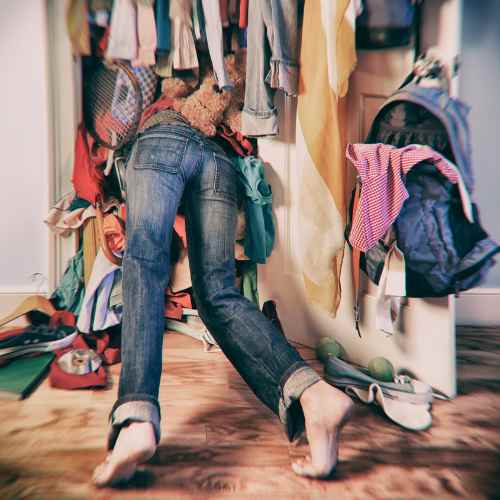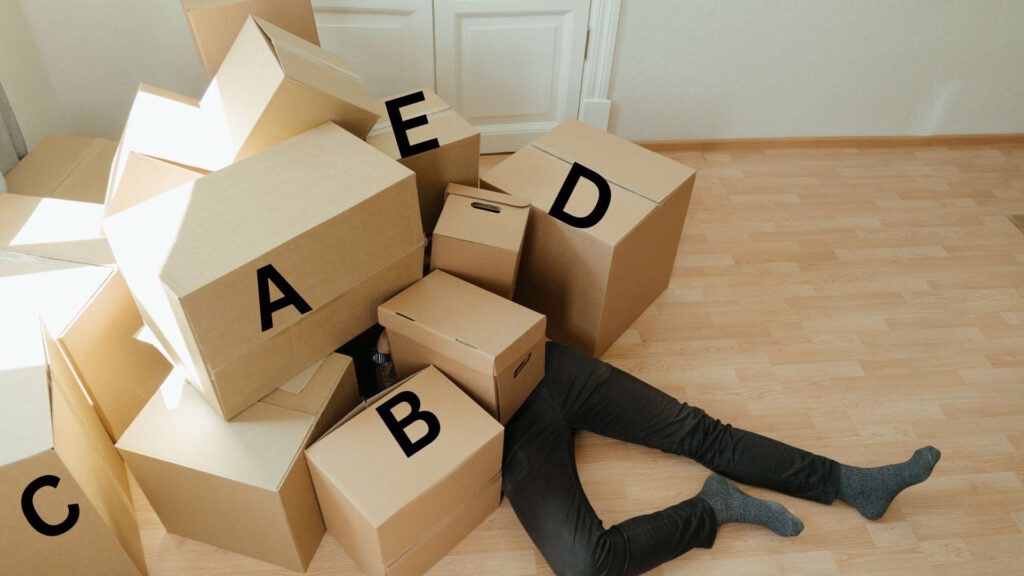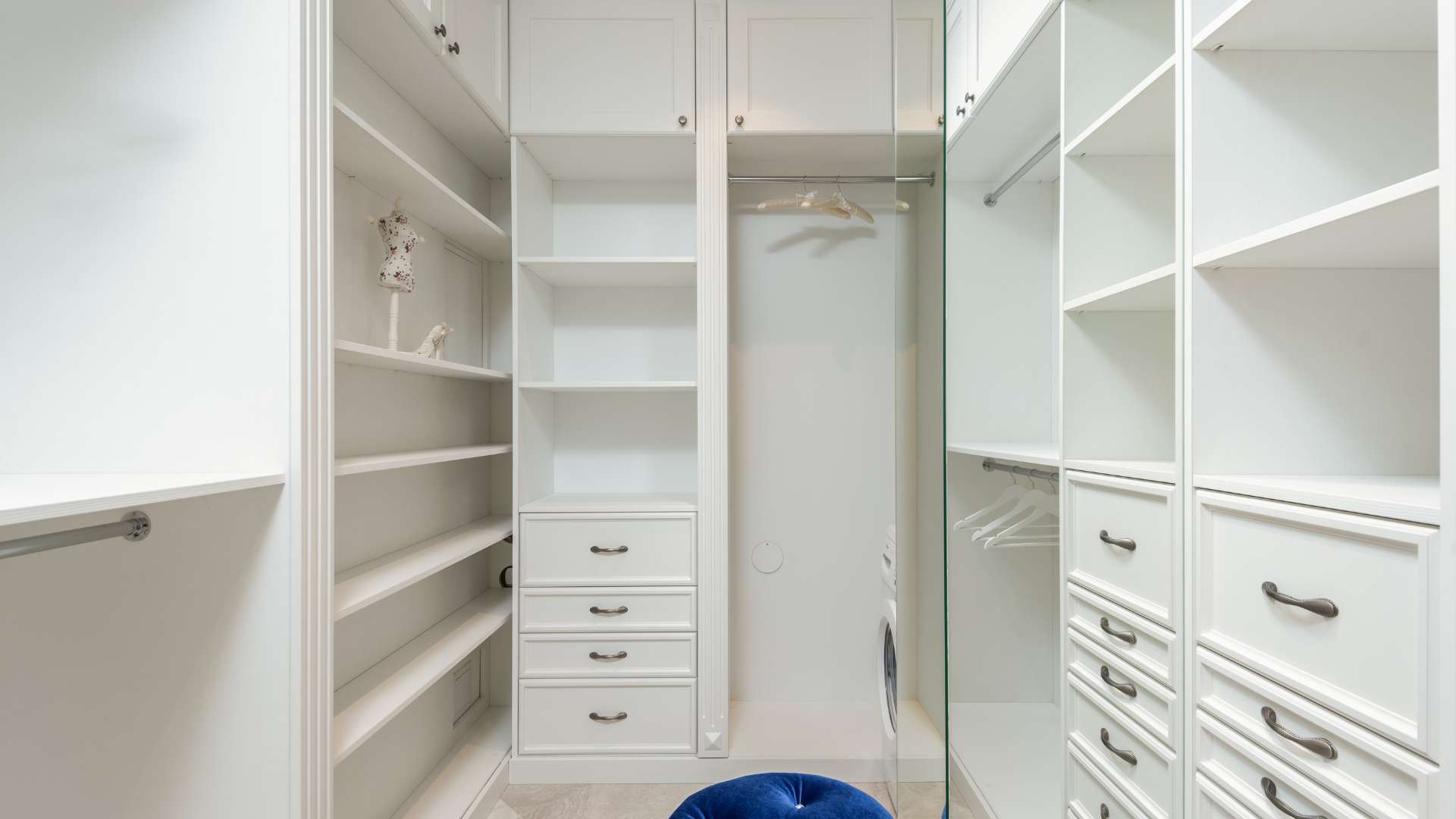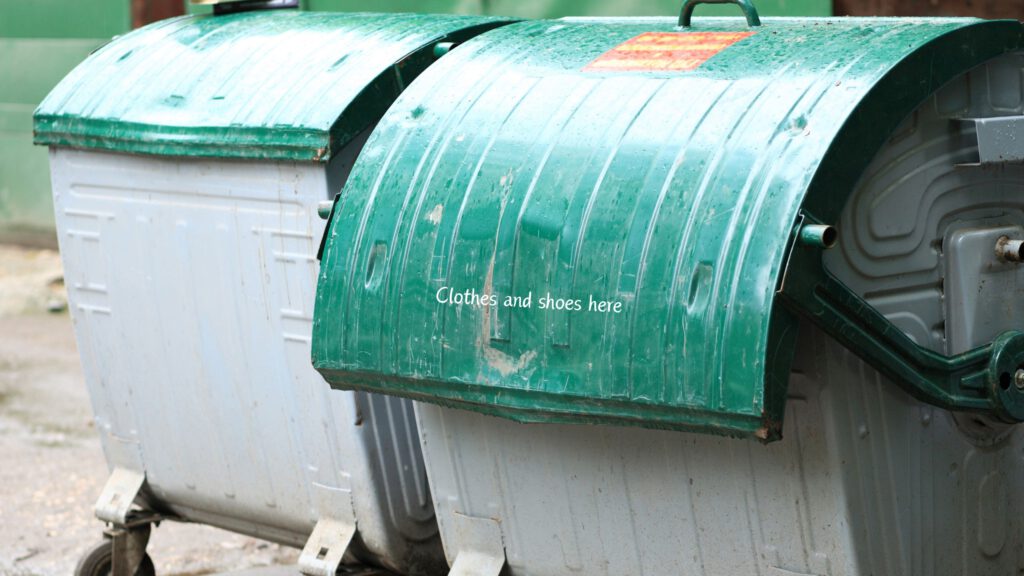
Jump to
Have you ever opened your closet and felt overwhelmed by the sight? You’re not alone. We have all had closets with, ill-fitting clothes, and items that have been untouched for years. We have been through the struggle of finding an outfit amongst piles of clothes we rarely wear? This nightmare is real and it is exhausting.


What Is Decluttering?
Decluttering your closet is about more than just discarding clothes? It’s also about reclaiming your space and maintaining a sense of peace.
Why declutter?
- A streamlined, functional wardrobe.
- More space and organization.
- A clearer understanding of your personal style.
- Easier decision-making when getting dressed.
The Decluttering Process
Gather what your need

- Five sections, (we will call them boxes) labeled A,B,C,D and E.
- A Mirror
- Most important: TIME and patience


Empty Your Closet Completely

Take everything out of your closet. Seeing all your clothes in one place helps you assess what you own, recognise duplicates or forgotten pieces and what needs to go.
Categorise
Go through each Item and group them first in the BOX A,B and C.

After placing the pieces in these 3 boxes, A, B, and C: we will still have to go through the 3 boxes AGAIN as we identify the below points.

BOX A
- You love the pieces – Remain in A.
- There’s a profound reassurance in wearing clothes that are already familiar. You are comfortable in how they feel and fit, but does not necessarily mean they are good for you. Place in E.
- Are versatile and can be combined with most of the stuff you own – Remain in A.
- Are in good condition and you love wearing them – Remain in A.
- Even if you believe you are unaffected by fashion trends, they still influence your wardrobe choices. This natural ebb and flow of attraction to clothing styles means that some pieces remain in your closet due to their timeless appeal, (while other pieces eventually fade away from your life – These go to E
- When you look good, you feel good, and that makes certain items irresistible – Remain in A.
- Sometimes, style takes a backseat to sheer practicality. If you’re in a rush, you’re more likely to grab the clothes that are easiest to throw on—those pieces that require minimal thought, but they may not be doing anything to your style and how you want to present yourself – These go to E
- Let’s be honest—there are times when we simply don’t feel like making an effort. On those days, your “lazy wardrobe” takes the lead. These are the go-to outfits that require no thought—think comfy leggings, the old T-shirt, or a trusty dirty pair of sneakers – These go to E.
Tip: When you find that certain items make you feel more like your true self, you’ll naturally be drawn to them rather (keep) than to those that don’t align with your current identity (let go).
Take each piece ……….

BOX B
- You loved wearing sometime but then you eventually forgot about them. Would you wear these pieces now. Was the fact that you forgot about them a result of clutter? These go to A
- Need some adjustments of some sorts – These go to E.
- As the weather shifts, your clothing choices often follow suit. While you may adore your summer dresses, once the cool air arrives, those items are relegated to the back of your closet in favor of cozy layers that provide warmth – These go to A.
- Worn-out clothing—whether due to excessive washing, fading, or loss of shape—often gets set aside for newer, better-quality items. Even if a piece used to fit perfectly, if it no longer does, it may end up in the “maybe someday” category – These go to E.
- If an item causes you to feel self-conscious or uneasy, it frequently ends up relegated to the back of your closet – These go to E.
BOX C
- Gifts you receive that may not align with your style – These go to D.
- You bought the pieces and because of the overwhelming nature of your closet, forgotten about them – These to go E.
- Still waiting for the right occasion to be worn – These to go E.
- We’ve all experienced the urge to make a spontaneous purchase. It could have been a flash sale, an eye-catching item, or something that seemed just right online. However, after the initial thrill wears off, you come to the realization that you don’t really need it or that it doesn’t seamlessly integrate into your daily wardrobe. That impulse buy now lingers in your closet, still tagged, serving as a reminder of that fleeting choice – These to go D.
- When you purchased the item, you probably envisioned a particular event or occasion—thinking, “I’ll wear this to that party next month” or “This will be ideal for a weekend getaway.” However, as time goes by, that event either never arrives or the circumstances simply don’t align. Now, the item, still with tags attached remains unused, patiently awaiting a “perfect” moment that never appears – These go to D.
- Many of us cling to clothing with the hope that one day, we will fit into them. Perhaps they were too tight when you first purchased them, yet you convinced yourself that eventually, they would be just right – These to go D.
- At times, we hold onto items for special occasions, only to realize that no moment ever seems worthy enough to use them. The irony lies in the fact that the longer we wait for the ideal opportunity, the greater the chance that the item will remain untouched on its hanger with tags still attached – These to go D.
- Some items linger in your closet, still tagged, because, on a deeper level, you purchased them with a “just in case” mindset. Perhaps it’s a professional outfit you’re reserving for a future event that hasn’t been set yet, or a dress you acquired because “you never know when it might come in handy.” – These go to D
BOX D and E
Throw Away


- Damaged beyond repair: Rips, tears, holes, stains that can’t be removed, faded colors, broken zippers, missing buttons.
- Worn out: Pilings, stretched fabric, extreme fading, worn-out elastic.
- Uncomfortable: Scratchy fabrics, itchy materials, ill-fitting styles that make you feel self-conscious.
- Out of style: Trends come and go, and it’s okay to let go of outdated pieces but if they are in good condition, you can donate them.


Donate
- Good condition: Clothes that are free of damage, stains, and wear.
- No longer fits: Clothes that are too small or too big, even if they’re sentimental. Must be in good condition though.Still wearable: Items that are in good condition but you no longer wear.
- Classic styles, even trends: Pieces that are timeless and can be worn by others.
- Seasonal items: Clothes that are in good condition but you only wear for a specific season.
Sell
- High-quality brands: Designer labels, well-made materials, and unique pieces.
- Current trends: Items that are in style and in demand.
- Good condition: No damage, stains, or wear.
- Resale value: Check online marketplaces to see if similar items are selling for a good price.
Closet overwhelm? Style block? Let’s fix by starting with what you already own. For closet edits, outfit iinspiration, and styling tips straight to your inbox 👉🏿
Summary
